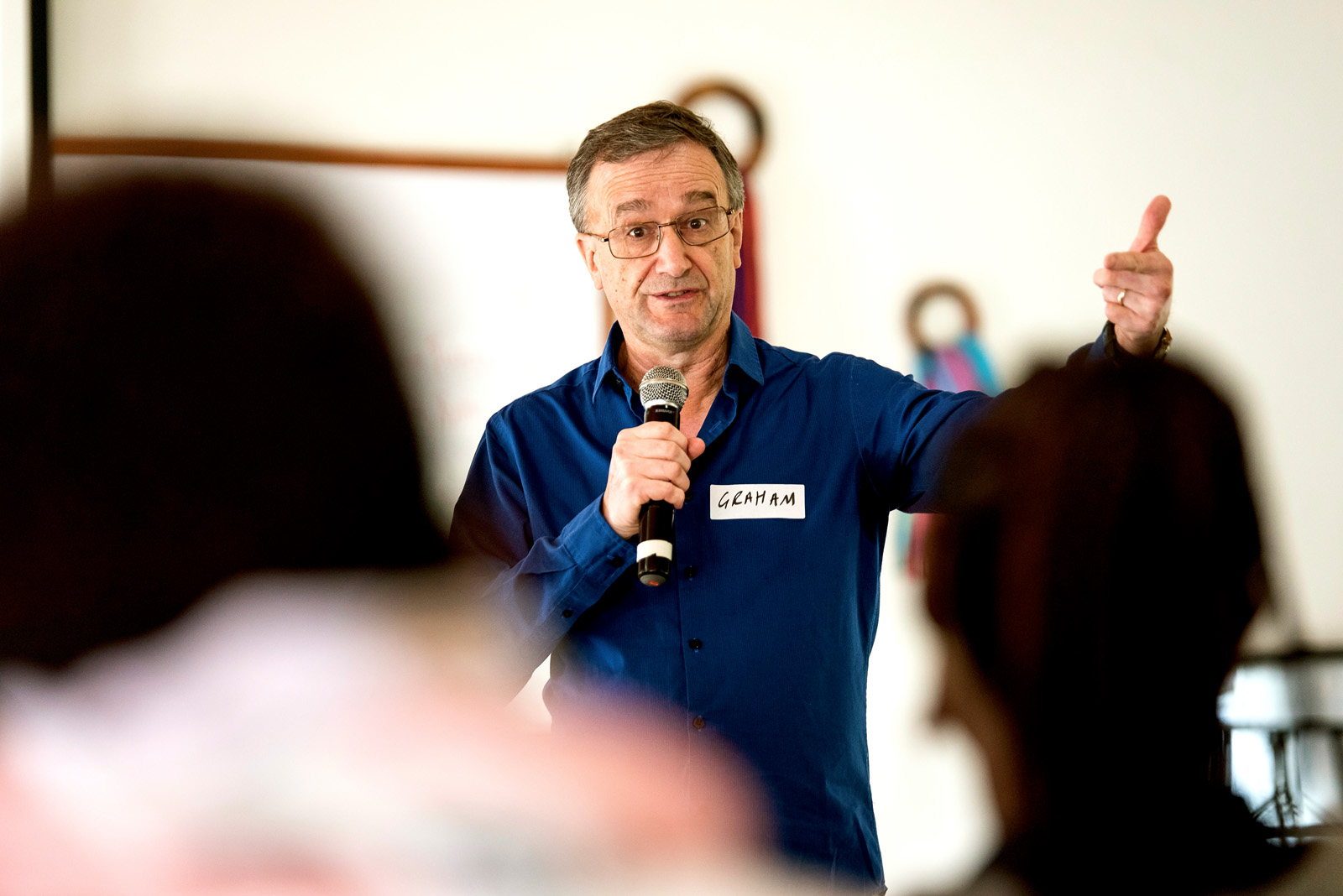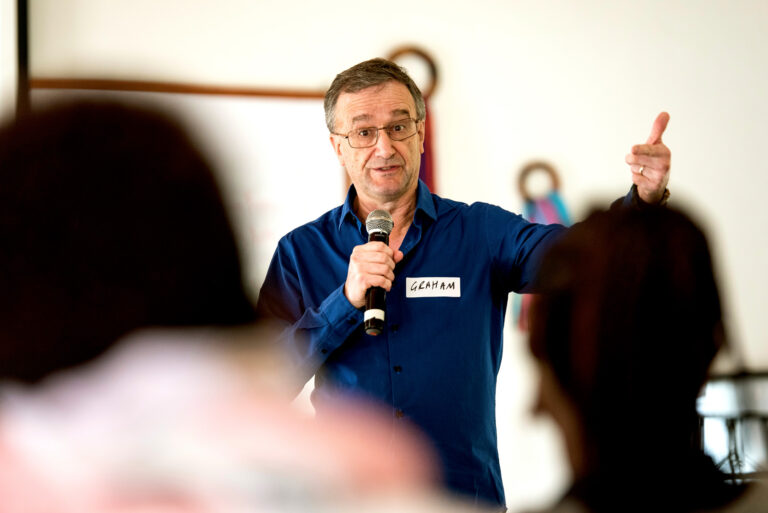3 Considerations For New ‘Hybrid’ Workspaces
With many organisations working out how to function as they emerge from lockdown, GRAHAM FAWCETT shares three considerations for how they might flourish in the long-term.
Once upon a time, I walked into my office building and got into the same lift as my CEO. She asked me what I was working on, and when I told her, she helpfully suggested a contact I could speak with about it.
Upon leaving the lift, I headed for my workspace and chatted with colleagues for a few moments about my weekend. I then went to the kitchen for my morning coffee, where I bumped into the head of department I had clashed with at our last operations meeting. We spent a few moments talking about weekends, our sluggish commutes, and what we both really meant during ‘that’ meeting.
In all of this, I picked up far more than just the conversation – the CEO looked happy with life, my colleagues were obviously hunkering down for a hard day, and my nemesis seemed in a much better mood than recently. All this was invaluable. And it all happened in under six minutes.
So how can we replicate it virtually?
Restarting office and field-based activities may involve asking how to return to existing properties and processes or how to migrate existing processes online. Many traditionally office-based activities are being moved entirely online, driven by demand from both staff enjoying the benefits of working from home and senior finance officers seeing that the demand for expensive real estate is dropping markedly.
Yet the overall picture is less clear cut. Not all workers have home environments that can adapt to long term home working (e.g. lack of space or child care) and some facilities require building-based activities (e.g. storage, laboratories, in-patient health care, food and distribution centres). The future of work is therefore likely to be a hybrid model, driven by a combination of logistical requirements and staff preferences.
In designing these new workspaces (real world or virtual) there are three human aspects that need to be built into our designs: serendipity, social capital and physicality.
1. Serendipity
Many of our most creative or insightful processes occur during random, unplanned activities or encounters. A prime activity of our minds is the ability to create associations, to ‘join the dots’ and the likelihood of this occurring increases as we experience novelty (on a walk for example) or talk with others in unstructured ways. Recall the best ideas or insights you have experienced and you may find they occur in unstructured, relaxing environments (e.g. the shower).
A further example of serendipity is the unplanned conversation or encounter that leads to the development of an idea or which sparks entirely novel ways of thinking. Office and other building-based environments enhance the possibility of that happening, hence the trend prior to lockdowns for workplaces to create more breakout and creative spaces.
Virtual environments damp down the possibilities for serendipitous encounters, and so it becomes necessary to try and create them. These spaces need to be synchronous, spontaneous and random – spaces that are hard to replicate virtually yet happen all the time physically.
2. Social Capital
Most agencies and organisations at least try to move beyond transactional relationships (‘if you do X I’ll pay you, promote you, give you a bonus’) towards socialized ways of doing things (‘If I enjoy my team I’ll go the extra mile for them’).
Within an organisation, when we want a problem solved, we call Fayed or Jane or Francois since we know they will make things happen or have a deep understanding of the problem. Within work we try harder for those we like and whose company we enjoy. (We pretend to work harder for those we only respect or fear, but only for as long as they are within sight). When we hear Ahmed make a pitch and see him fumble we remember he is a new dad surviving on two hours sleep and step up to support him. When Collette makes a pitch perfect client presentation we know how hard she worked and congratulate her accordingly.
In short, in reasonably well-run organisations, we like our colleagues, we want them to do well, and we want to hang out with them. This emerges in places where we mix informally – the water cooler, helping a nearby colleague with a tech issue, listening to a desk-mate think through an issue, the simple act of getting in a lift or passing on the stairs. All of this builds connections or ‘social capital’ – a network of highly informal social grooming activities designed to make things run more smoothly. We learn early in our career that there are two sets of people you never antagonise anywhere – the cleaners and the receptionists, they have the power to make or break you.
At the moment it’s as if our social capital is running on battery power – reliant on ever more distant memories of informal contact.
3. Physicality
Zoom is described as the great leveler. You no longer need to attend the boardroom on the tenth floor behind multiple steely-eyed receptionists. Making it to the kitchen table with your top half assembled gets you in the room.
And yet – there is something missing. There is something about being in a room or nearby to someone to add colour to the encounter. It’s easier to see their doodles, their smile of appreciation or their tapping feet (bored like everyone else at the boss’s latest harebrained scheme). To be in the corridor immediately afterwards, to come off the distribution line and be able to react immediately is a relief that is not met by the Zoom ‘give feedback’ screen.
Teasing and banter is easier and more fun in person too. One place I worked had the executives in high-walled glass cubicles open to the ceiling. I made what I thought was a great point to the COO, but then a few seconds later a rolled up ball of paper was flicked over the wall from the deputy CEO cubicle and bounced on our meeting table – it was a humorous comment on the inanity of my suggestion.
Social chats about each other, our lives, our friends and family provides the social glue that unites people and gives them something to talk about other than problems with the photocopier or other work related logistics.All of this adds to the vibe of our workspaces and provides clues about possible alliances and our collective mood yet are best done face to face.
And so, here’s some possible solutions:
Recognise early on that it is challenging to run an organisation entirely virtually. For the most part it works, but spaces to come together in similar-minded or tasked groups periodically is invaluable. In Thrive, the senior leadership team meet somewhere in the world once a year for 4 days. Where staff are clustered by geography they get together more regularly for a few hours or half a day every 6 – 8 weeks. All these gatherings involve food, some fun and a very light schedule. A lot of small meetings happen between 2 or 3 individuals to clarify processes or ideas.
Centrally located Kanban boards or similar so people can ‘see’ the organisation as a whole.
Regular check in spaces (not meetings). These are entirely non-agenda driven meetings lasting no more than an hour, designed to help people reflect and share ideas.
Parties. Regularly. These can be around a festival (Divali, Eid, Christmas, Thanksgiving), a birthday (Thrive celebrates being 3 in September) or just for the heck of it. They happen in core work time, aren’t compulsory and are creative. If you’re stuck for ideas try Charades.
Start as many meetings as possible with check-ins. For example: What are you working on today? How was the weekend? Which meeting is your most challenging this week?
Have regular lunch break spaces. An open Slack, House-party or Zoom channel open at the same regular time.
Pick up the phone. Don’t e-mail, don’t set up a zoom meeting, don’t double guess the other person’s schedule – just wander into their space. If you were working together you’d do that…
Yes, alright… happy hour. But that’s usually the time the kids are home from school, in the bath, having tea, going to bed, all of the above. How about afternoon snacks? Morning coffee? After dinner cocktails or beer?
Some of these ideas won’t work. Some will. Others not on the list will work as well. Our aim is to increase the opportunities for serendipity, to grow new social capital and to create opportunity for physicality in new ways.
If you are stuck or want to think this through, Thrive can help. You can chat with one of our organisational colleagues to think this through, across cultures, borders, continents and settings.










